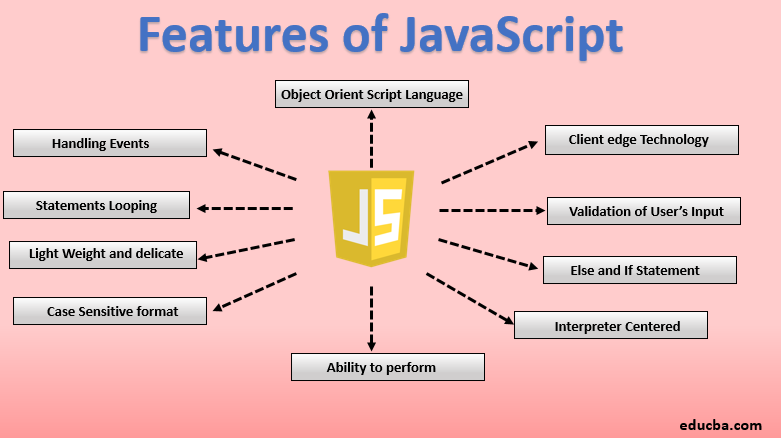JavaScript is a versatile and powerful programming language primarily used for creating dynamic and interactive content on web pages. Its features are extensive and constantly evolving, but here's an overview of some key elements and features:
1. High-level, Interpreted Language:
- JavaScript is a high-level language, meaning it is closer to human language and is relatively easy to read and write.
- It's an interpreted language, executing code line by line without the need for a compilation step.
2. Dynamic Typing:
- JavaScript is dynamically typed, allowing variables to hold values of any data type without explicitly specifying the type.
3. First-class Functions:
- Functions are treated as first-class citizens, meaning they can be assigned to variables, passed as arguments, and returned from other functions.
4. Prototypal Inheritance:
- JavaScript uses prototypal inheritance, allowing objects to inherit properties from other objects.
5. Asynchronous Programming:
- JavaScript excels in handling asynchronous operations with features like callbacks, promises, and async/await, enabling non-blocking operations.
6. DOM Manipulation:
- It allows manipulation of the Document Object Model (DOM), enabling interaction with HTML and CSS to dynamically modify page content.
7. Closures:
- Closures allow functions to retain access to variables from their containing scope, even after the parent function has finished executing.
8. Arrow Functions:
- ES6 introduced arrow functions, offering a more concise syntax for writing function expressions.
9. Modules:
- ES6 Modules provide a way to organize code into reusable components, improving code maintainability and reusability.
10. Template Literals:
- Template literals offer an easy way to create strings with embedded expressions, making string interpolation simpler.
11. Classes:
- JavaScript supports class-based object-oriented programming, introduced in ES6, offering a more familiar syntax for defining classes and objects.
12. Error Handling:
- JavaScript allows for robust error handling using
try, catch, and finally blocks.
13. Garbage Collection:
- The language automatically manages memory by employing garbage collection to free up memory from objects that are no longer in use.
14. Regular Expressions:
- JavaScript supports regular expressions, enabling powerful string manipulation and search functionalities.
15. Web APIs:
- It offers access to various web APIs, allowing interaction with browser functionalities like geolocation, local storage, and more.
16. JSON (JavaScript Object Notation):
- JSON is a lightweight data interchange format that is closely related to JavaScript's object literal syntax.
JavaScript's ecosystem is vast and continuously evolving, with new features and updates introduced regularly, especially with the ECMAScript standards. These features collectively contribute to making JavaScript a popular and flexible language for both frontend and backend development.
Thank you.

